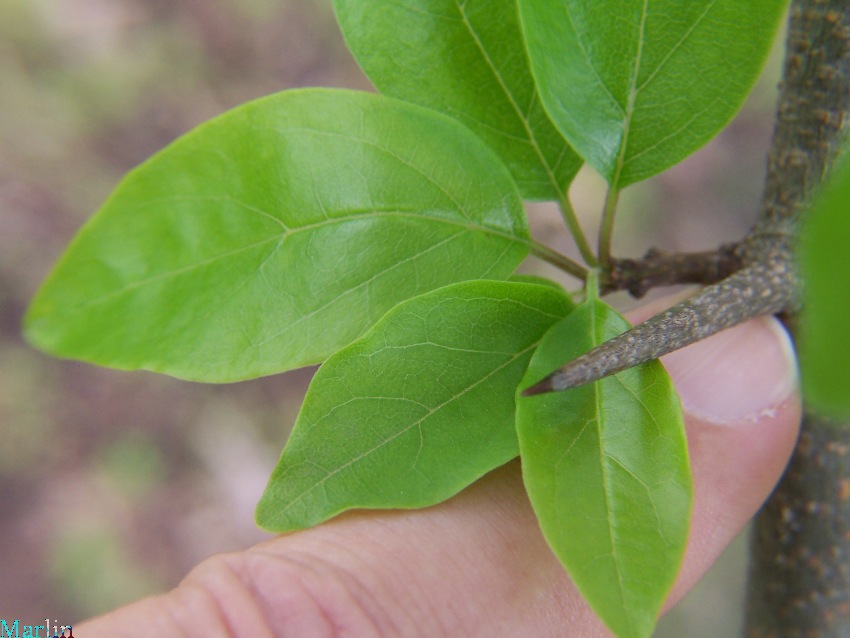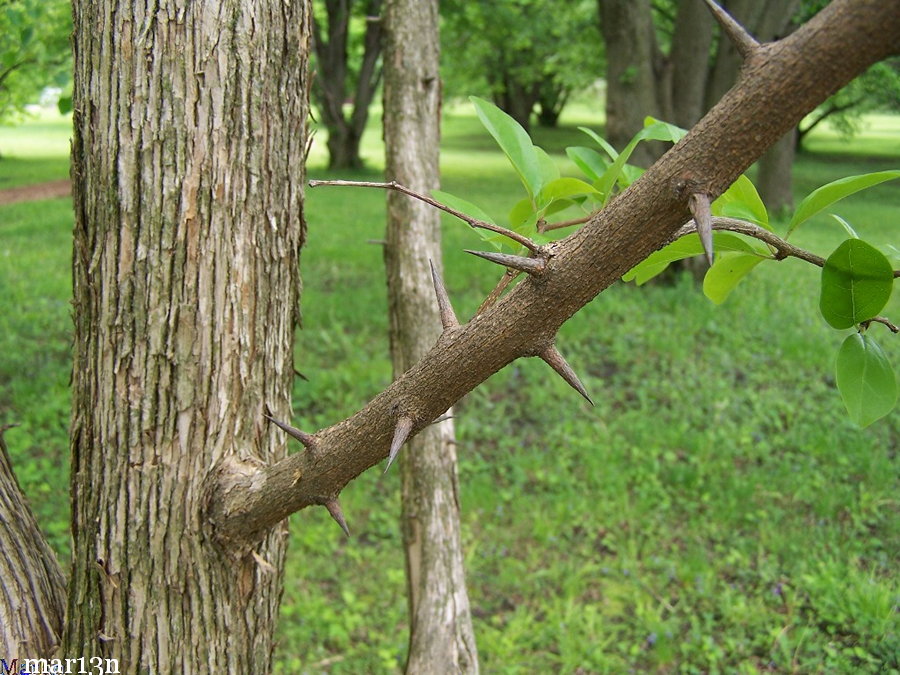Silkworm Thorn – Cudrania tricuspidata

Foliage and eponymous thorn
Cudrania tricuspidata, commonly known as the silkworm thorn, is a deciduous tree in the Moraceae family that is native to East Asia. The tree can grow up to 15 meters in height and has leaves that are similar in shape to those of the mulberry tree.
The silkworm thorn is an important tree for sericulture, the cultivation of silkworms for silk production. The leaves of the silkworm thorn are the primary food source for domesticated silkworm species, such as Bombyx mori, as well as for wild silkworm species found in East Asia.

Silkworm Thorn was started from seed 28 years ago
The fruit of the silkworm thorn is generally smaller than that of the mulberry tree, which is another important food source for silkworms.
The silkworm thorn has several common names. In Chinese, it is known as “山桑叶” which translates to “mountain mulberry leaf,” or “荷叶树” which roughly translates to “lotus leaf tree.” In Korean, it is called “dureup namu” while in Japanese, it is known as “ki no shibuji” (thorn of the silk tree).

Bark and thorns reminiscent of the closely related Osage Orange, Maclura pomifera
In addition to its use as a food source for silkworms, the silkworm thorn has medicinal properties and is used in traditional medicine in East Asia.
The leaves of the silkworm thorn are also used as a herbal tea, and the bark of the tree has been used in the production of paper.
References:
1. ITIS Standard Report, Cudrania tricuspidata
2. California Rare Fruit Growers Inc., CHE
3. Flora of China, Maclura tricuspidata
Trees Index | Trees Main
